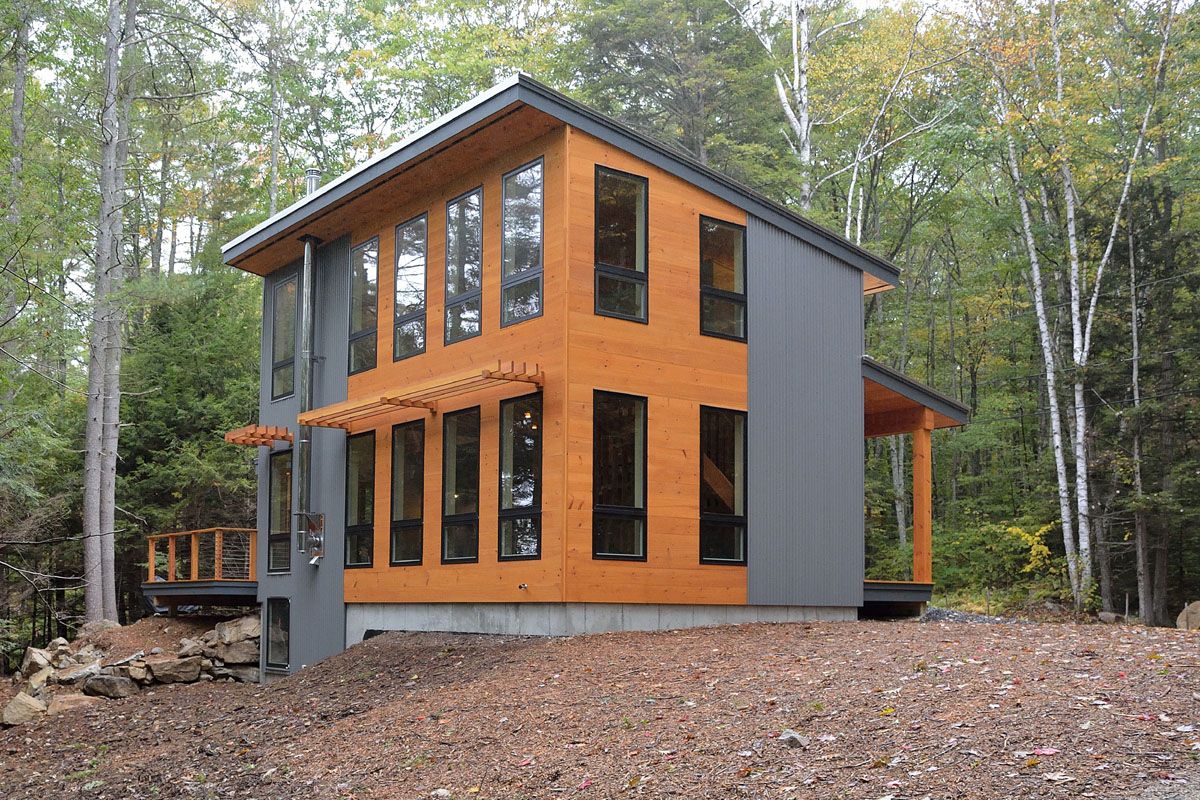The direction from which the wind blows plays a pivotal role in determining the optimal location for constructing a house. Grasping wind patterns enables homeowners and architects to design residences that are not only comfortable but also energy-efficient.
Glenn Murcutt, a renowned Pritzker Prize laureate, once remarked, “Wind direction is an architect’s compass. By mastering it, we can design buildings that are not only beautiful but also functional and responsive to the surrounding environment.”
The Importance of Wind Direction in Home Construction
Understanding wind direction is fundamental in house design for several reasons:
A. Maximizing Natural Light and Ventilation
The orientation of a house relative to prevailing winds can significantly influence the influx of natural light and airflow within the living spaces. Properly aligned openings, such as windows and vents, allow for optimal sunlight penetration during the day, which not only illuminates rooms naturally but also aids in reducing indoor humidity and eliminating airborne germs.
B. Enhancing Energy Efficiency
By intelligently designing the placement of windows and other openings based on wind patterns, homeowners can facilitate effective airflow. This natural ventilation keeps interiors cooler and fresher, minimizing the reliance on artificial cooling systems like air conditioners. Consequently, this reduces energy consumption and lowers monthly electricity bills.
C. Regulating Indoor Temperature Across Seasons
Proper wind orientation helps maintain comfortable indoor temperatures throughout the year. In warmer months, shading elements like window blinds can be employed on the sides of the house that receive intense sunlight to prevent overheating. Conversely, during colder seasons, strategically opening windows on sun-facing sides allows sunlight to warm the interiors, reducing the need for additional heating.
Le Corbusier, a prominent Modernist architect, emphasized, “Sunlight is a priceless source of energy. By making maximum use of natural light, we can reduce the use of lamps and save on electricity costs.”
Benefits of Optimizing Wind Direction
Implementing wind-oriented design principles offers numerous advantages:
- Improved Air Quality
Effective wind direction management ensures continuous air circulation, replacing stale indoor air with fresh outdoor air. This exchange removes dust particles and other pollutants, promoting healthier living environments.
- Reduced Energy Costs
Leveraging natural light and ventilation diminishes the need for electric lighting and mechanical cooling or heating, leading to substantial savings on utility bills.
- Environmental Sustainability
Energy-efficient homes consume fewer resources and contribute to lower carbon emissions, aligning with sustainable living practices and environmental conservation efforts.
Ideal Wind Directions for Various Home Functions
Different cardinal directions offer unique benefits for various parts of a home. Understanding these can guide the optimal placement of rooms and architectural features.
A. North-Facing Areas
Generally, the northern direction is favorable for spaces requiring minimal direct sunlight. During the day, the northern side remains cooler, making it an ideal location for family rooms or bedrooms. These areas benefit from reduced heat accumulation, creating a comfortable and serene environment.
B. South-Facing Areas
The southern side of a house receives ample sunlight throughout the day. This makes it an excellent choice for areas that benefit from natural light, such as dining rooms and kitchens. These spaces can stay bright and warm, enhancing the ambiance and functionality during meal times and cooking activities.
C. East-Facing Areas
Morning sunlight entering from the east warms the house early in the day. This side is perfect for children’s bedrooms or study rooms, providing a gentle, natural light that can help invigorate and energize occupants as they start their day.
D. West-Facing Areas
Afternoon sunlight from the west can lead to increased heat buildup in rooms. Therefore, it is advisable to avoid placing primary bedrooms on the western side of the house. Instead, such areas can be reserved for spaces less sensitive to heat or equipped with adequate shading to mitigate excessive warmth.
Design Considerations Based on Cardinal Directions
When designing a house with wind orientation in mind, several factors must be considered to ensure optimal performance and comfort.
A. Climate Analysis
Before initiating construction, it is crucial to study the local climate. Factors to evaluate include:
- Prevailing Wind Directions: Understanding the dominant wind patterns helps in planning the orientation of the house.
- Insolation: Assessing the amount of sunlight different parts of the property receive throughout the year.
- Evapotranspiration Rates: Understanding moisture levels to manage humidity and air quality.
- Rainfall Patterns: Planning for drainage and structural resilience against heavy rains.
This analysis enables the creation of a flexible house plan that can adapt to seasonal and weather variations.
B. Strategic Placement of Openings
The size and placement of windows and doors should be adjusted based on wind direction to facilitate effective light and air penetration. For instance, larger windows on windward sides can enhance ventilation, while strategically placed shutters or blinds can control light and heat ingress.
C. Selection of Building Materials
Choosing materials with appropriate thermal properties is essential. Insulating materials help maintain warmth during cooler periods, while reflective or breathable materials can keep interiors cool in hotter climates.
D. Landscaping for Shade and Wind Management
Planting trees and shrubs around the property can provide natural shading, reducing heat around the house. Additionally, certain vegetation can act as windbreaks, mitigating harsh winds and creating microclimates that enhance overall comfort.
Implementing Wind-Oriented Design for Optimal Living
The orientation of wind is a critical aspect of architectural design that influences both the comfort and energy efficiency of a home. By understanding and applying the principles of wind direction, homeowners can create living spaces that are healthy, comfortable, and environmentally sustainable.
This approach not only enhances the quality of life for occupants but also aligns with broader goals of energy conservation and ecological responsibility. As architectural practices continue to evolve, the integration of wind-oriented design remains a cornerstone of creating resilient and adaptive homes.

Additional Strategies for Enhancing Wind Efficiency
Beyond the basic principles of wind direction, several additional strategies can be employed to maximize the benefits of wind in home design.
A. Cross Ventilation Techniques
Implementing cross ventilation involves designing the house so that air can flow freely from one side to the other. This can be achieved by aligning windows and doors on opposite walls, creating a pathway for air to move through the space. Effective cross ventilation reduces indoor temperatures and improves air quality without the need for mechanical cooling systems.
B. Passive Cooling Systems
Incorporating passive cooling systems, such as ventilated attics or shaded courtyards, can further enhance natural airflow. These systems utilize architectural features to dissipate heat and maintain comfortable indoor temperatures, especially during hot summer months.
C. Thermal Mass Utilization
Utilizing materials with high thermal mass, like concrete or brick, can help regulate indoor temperatures by absorbing and slowly releasing heat. This moderates temperature fluctuations, keeping interiors cooler during the day and warmer at night.
D. Smart Shading Solutions
Advanced shading solutions, such as adjustable louvers or automated blinds, can dynamically control the amount of sunlight entering the home. These systems respond to changes in wind direction and sunlight intensity, optimizing comfort and energy efficiency throughout the day.
E. Renewable Energy Integration
Combining wind-oriented design with renewable energy sources, such as wind turbines or solar panels, can further reduce the home’s reliance on traditional energy grids. This integration promotes sustainability and can lead to significant cost savings over time.
Case Studies: Successful Wind-Oriented Homes
Examining real-world examples of wind-oriented home designs highlights the practical benefits and feasibility of these principles.
A. Eco-Friendly Residences
Many eco-friendly homes incorporate wind direction strategies to enhance energy efficiency and sustainability. Features like strategically placed windows, natural ventilation systems, and renewable energy installations are common in these designs.
B. Passive House Models
Passive house models prioritize energy efficiency through airtight construction, high levels of insulation, and optimized orientation. Wind direction plays a crucial role in achieving the passive house standard by ensuring effective natural ventilation and temperature regulation.
C. Traditional Architectural Styles
Traditional architectural styles often reflect an inherent understanding of wind direction and climate adaptation. For example, vernacular buildings in various cultures use local materials and design elements that naturally align with prevailing winds to create comfortable living environments.
Future Trends in Wind-Oriented Architecture
As the demand for sustainable and energy-efficient homes grows, wind-oriented architecture continues to evolve. Future trends include:
A. Smart Home Technologies
Incorporating smart home technologies that monitor and adjust ventilation and shading systems in real-time based on wind conditions can enhance the responsiveness and efficiency of wind-oriented designs.
B. Adaptive Building Designs
Adaptive designs that can reorient or adjust features like windows and vents in response to changing wind patterns or climate conditions represent the next frontier in wind-oriented architecture.
C. Integration with Urban Planning
Urban planning initiatives increasingly consider wind patterns and microclimates in the design of residential areas. This holistic approach ensures that individual homes contribute to the overall environmental performance and comfort of the community.
Conclusion
Wind direction is a powerful determinant in the design and construction of comfortable, energy-efficient homes. By leveraging natural wind patterns, architects and homeowners can create living spaces that are not only aesthetically pleasing but also functional and sustainable.
Understanding and applying wind-oriented design principles leads to healthier indoor environments, reduced energy consumption, and lower utility costs, all while contributing to environmental conservation.










